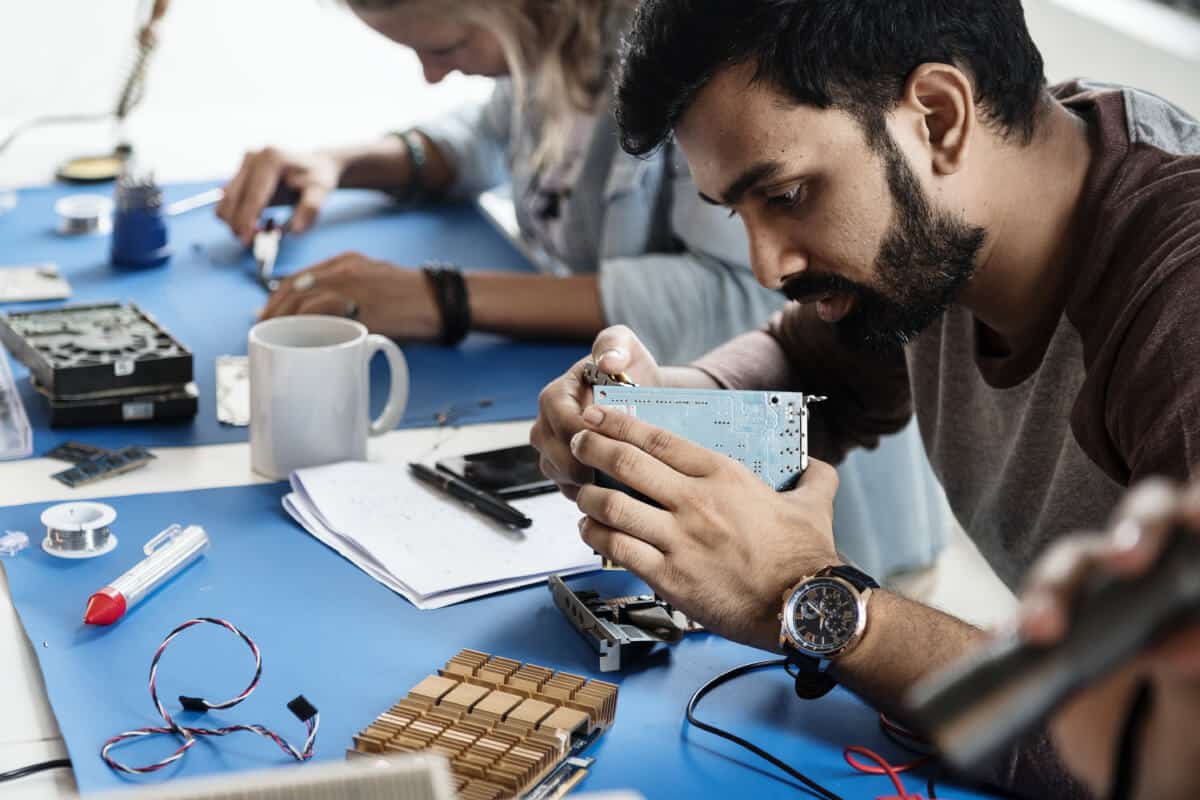Engineering hardware development is a complex and often time-consuming process that requires high precision and accuracy. In recent years, simulation technology has rapidly grown, allowing engineers to create a virtual model of their designs, test them, and make necessary adjustments before physically building anything. This approach has revolutionized the industry by reducing costs, minimizing errors, and improving time to market. Simulations provide a powerful tool for engineering teams to design and test hardware more efficiently. In this blog post, we will explore how simulations change the landscape of engineering hardware development.
Benefits of Simulations in Hardware Development
Using simulations in hardware development comes with several benefits, including
Cost Reduction
By simulating hardware design before building physical prototypes, engineers can identify and rectify design flaws before making the actual hardware product. This approach saves money on materials, labor, and testing.
Time-Saving
Simulations allow engineers to test multiple designs and iterations quickly, accelerating development, saving time, and allowing engineers to get products to the market faster.
Improved Product Quality
Simulations enable engineers to test the product based on various scenarios and identify potential issues early in the designing process, helping engineers develop better, more reliable, robust, and more efficient designs.
Increased Innovation
Through simulations, engineers can test new ideas and explore design concepts that would otherwise be impractical or impossible to test physically. This approach allows them to push the boundaries of innovation and develop new hardware solutions that were previously unattainable.
Types of Simulations in Engineering
Simulations can take many forms in engineering, depending on the type of hardware being developed and the design challenges engineers are trying to solve. Some common types of simulations in engineering include:
- Finite Element Analysis (FEA): FEA is a numerical method to solve complex engineering problems by dividing them into smaller, more manageable parts. FEA is commonly used to analyze structural mechanics, heat transfer, and fluid dynamics.
- Computational Fluid Dynamics (CFD): CFD is a branch of fluid mechanics that uses numerical analysis and algorithms to solve and analyze fluid flow problems. CFD is commonly used to design aerodynamic structures like airplanes and cars.
- Electromagnetic Simulations: Electromagnetic simulations are used to model and analyze the behavior of electromagnetic fields. These simulations design electronic devices like antennas, motors, and generators.
Applications of Simulations in Engineering Hardware Development
The use of simulations in engineering hardware development is widespread across many industries, including aerospace, automotive, electronics, and medical devices. Here are some examples of how simulations are used in hardware development:
- Aerospace: Aerospace engineers use simulations to test and optimize aircraft designs, including aerodynamics, structural integrity, and heat transfer.
- Automotive: Automotive engineers use simulations to optimize engine performance, reduce emissions, and improve fuel efficiency.
- Electronics: Electronics engineers use simulations to model and test the behavior of electronic components, such as circuits, antennas, and sensors.
- Medical Devices: Medical device engineers use simulations to optimize the design of devices, such as pacemakers, implants, and prosthetics.
Helpful: PCB Stackup Design
Future of Simulations in Hardware Development
The future of simulations in hardware development is promising as it offers significant advantages over traditional methods. Simulations allow engineers to model and test hardware designs in a virtual environment before committing to physical prototypes, saving time and resources. As technology advances and simulations become more sophisticated, their importance in hardware development will only increase.
One area where simulations are already having a big impact is the design of integrated circuits (ICs). ICs are at the heart of almost every electronic device, and their design is becoming increasingly complex. Simulations can help designers identify potential problems early in the design process, allowing them to make changes before the chip is manufactured, reducing the need for costly re-spins.
Simulations are also becoming increasingly essential in the development of autonomous vehicles. Simulations allow engineers to test how a self-driving car will perform in various scenarios without physical testing. This is especially important regarding safety, as it allows engineers to identify potential hazards and make improvements before the vehicle is on the road.
Role of Tessolve in Revolutionizing Engineering Hardware Development with Simulation
Tessolve is a global engineering services company that provides end-to-end engineering solutions to various industries. The company has revolutionized hardware development by incorporating simulation into the design process. Simulation technology is a computer-based process that allows engineers to create virtual prototypes of hardware systems and test their performance without needing physical hardware.
Using simulation technology, Tessolve has reduced the time and cost required to develop new hardware systems. Traditional hardware development methods require the creation of physical prototypes, which can be time-consuming and expensive. However, with simulation technology, Tessolve engineers can quickly create virtual prototypes and test their performance in a virtual environment. This significantly reduces the time and cost required to develop new hardware systems.
Moreover, simulation technology at Tessolve allows engineers to test the performance of hardware systems under difficult conditions. This helps identify potential issues before the hardware is built, saving time and money in the long run. Simulation technology can also help optimize the design of hardware systems, leading to improved performance and reduced costs.
Helpful: Automated Routing for PCB
Conclusive Thoughts
Simulations are crucial in developing hardware in the engineering industry. They allow engineers to test and refine designs without physical prototypes, reducing time and costs. Tessolve, as a leading provider of engineering services, recognizes the importance of simulations and offers a range of simulation services to its clients.
From finite element analysis to computational fluid dynamics, Tessolve’s simulation capabilities enable our clients to optimize their designs for performance, durability, and safety. In today’s fast-paced and competitive market, simulations are essential for staying ahead of the curve and delivering high-quality products. Tessolve’s expertise in simulation can be a valuable asset to any hardware development project.



